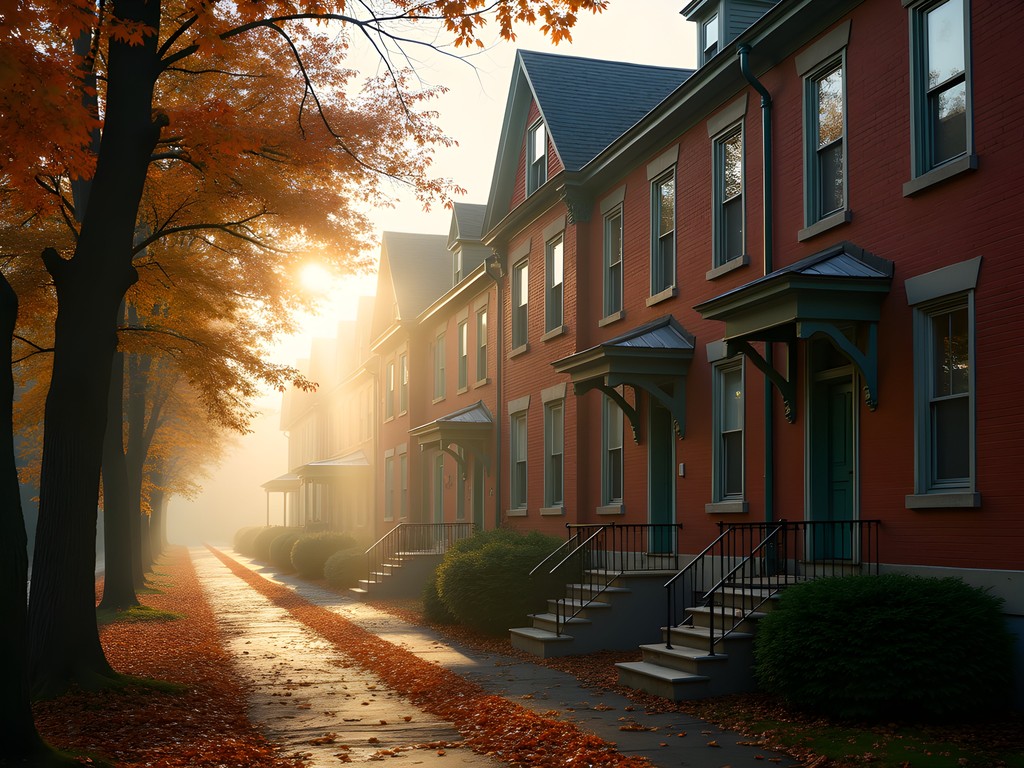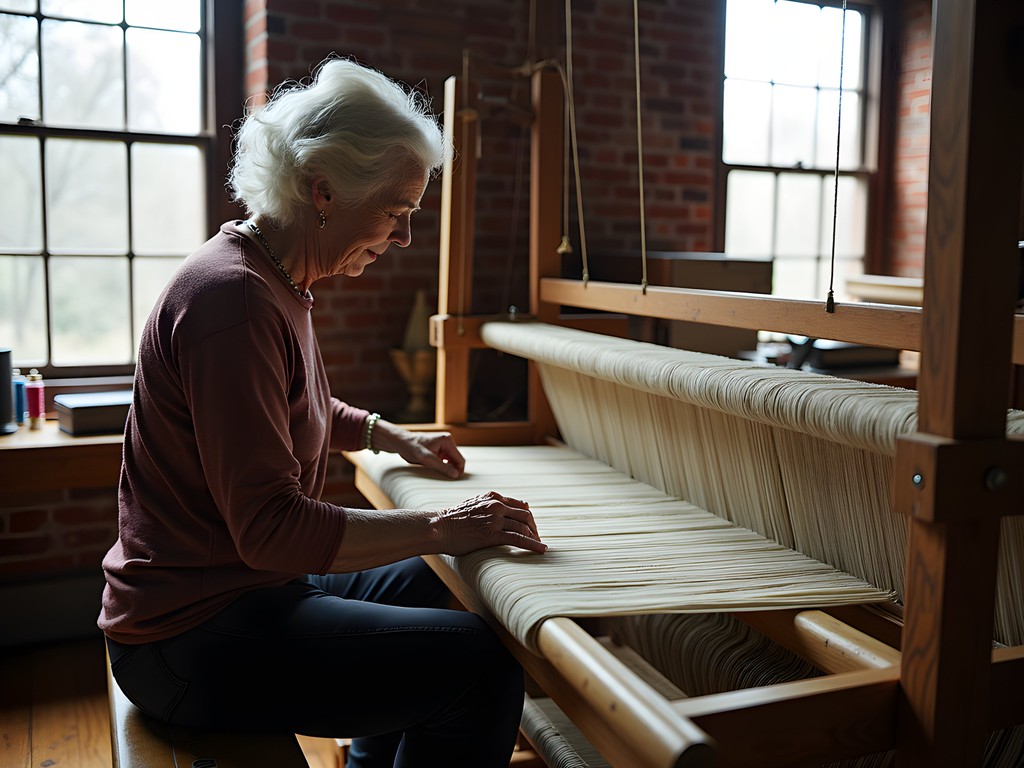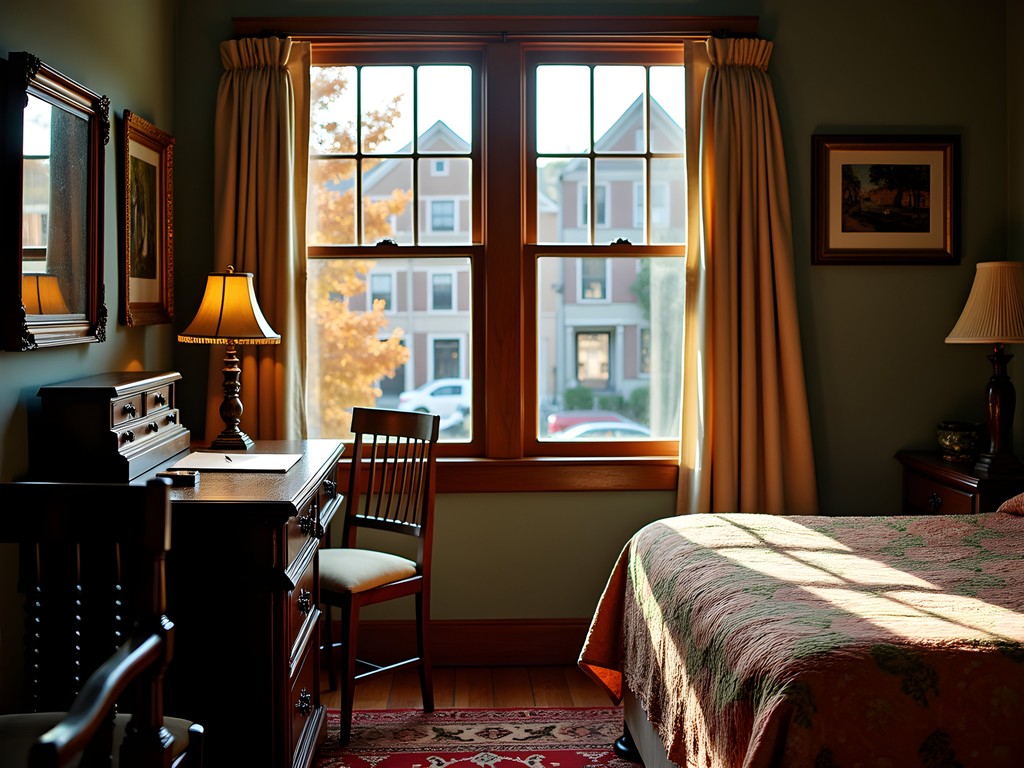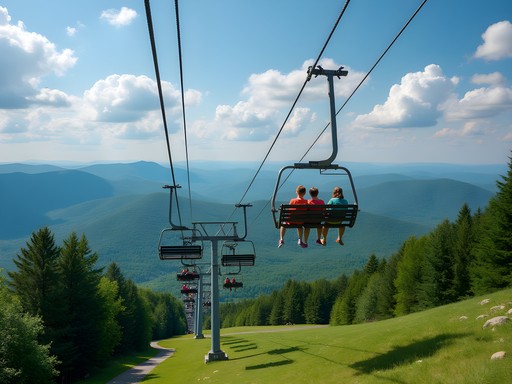Disclosure: This article contains affiliate links. We may earn a commission from purchases at no extra cost to you, which helps our travel content.
There's something hauntingly beautiful about abandoned textile mills—their brick facades telling stories of America's industrial awakening. When autumn paints Maine's landscape in fiery hues, these architectural giants stand as stoic witnesses to generations of change. I discovered Auburn's textile heritage trail quite by accident last fall, while researching New England ceramic traditions. What I found instead was a weekend journey through America's manufacturing past that spoke to my soul as both an artist and storyteller.
The Androscoggin's Forgotten Giants
Auburn sits along the Androscoggin River, where rushing waters once powered massive brick complexes that transformed raw cotton into textiles shipped worldwide. The river's edge is lined with these industrial cathedrals—some repurposed, others quietly decaying.
Start your exploration at Museum L-A, housed in the former Bates Mill Complex across the river in Lewiston (Auburn's sister city). The museum's collection of vintage machinery, worker photographs, and oral histories provides essential context for understanding what you'll see throughout the weekend. I spent a mesmerizing hour watching the restored power looms demonstrate how thread became fabric, the rhythmic clacking echoing through the space just as it would have a century ago.
For capturing the industrial scale of these buildings, I found my drone invaluable. With proper permissions (always check local regulations), the aerial perspective reveals the true magnitude of these manufacturing complexes and their relationship to the river that powered them. Even if you're not a drone enthusiast, a good polarizing filter for your camera will help manage reflections when photographing the river and mill windows.

💡 Pro Tips
- Visit Museum L-A first to get historical context before exploring other sites
- Check drone regulations before flying near the river or historic buildings
- The museum offers guided tours at 11am and 2pm—book ahead for the most in-depth experience
Walking in Workers' Footsteps
The heart of Auburn's textile heritage is best experienced on foot. The self-guided Textile Heritage Trail (maps available at the Auburn Public Library or downloadable online) takes you through neighborhoods built specifically for mill workers—predominantly French Canadian, Irish, and later, Somali immigrants.
I started my walk at 6:30am with a steaming cup of locally-roasted coffee in my insulated mug, which kept it warm as I explored the morning-quiet streets. The early light revealed architectural details I might have missed later: the intricate brickwork of company housing, communal gardens now repurposed as community spaces, and the spires of churches built to serve specific immigrant populations.
The Little Androscoggin River Park offers a peaceful stretch to contemplate how the rushing waters shaped not just the landscape but entire communities. Bring a packable blanket to spread beneath the maple trees—their autumn colors reflected in the river create a meditation space unlike any other. I spent an hour here sketching the abandoned mill across the water, contemplating how many hands had worked within those walls.

💡 Pro Tips
- Download the heritage trail map before arriving as cell service can be spotty in some areas
- Wear comfortable walking shoes—the full trail covers about 3 miles of varied terrain
- Early morning offers the best light for photography and fewer people in your shots
Meeting Auburn's Modern Makers
What drew me most to Auburn wasn't just its industrial past but how that legacy continues through contemporary artisans. Several former mill buildings now house studios where makers continue traditions of textile arts, albeit on a smaller scale.
The Stable Gallery, housed in a converted mill outbuilding, showcases local fiber artists who incorporate traditional techniques with modern sensibilities. I spent an afternoon watching a demonstration of traditional loom weaving, mesmerized by the meditative quality of the work—not unlike throwing pottery on a wheel.
For those interested in bringing home a piece of this textile tradition, I recommend visiting Maine Woolens. Their mill store offers factory seconds and samples at significant discounts. I found a gorgeous wool throw for under $50 that now travels with me everywhere in my compression packing cube. It's both a practical souvenir and a tangible connection to Auburn's manufacturing heritage.
The most profound experience came from an impromptu conversation with Marie, a third-generation weaver whose grandmother worked in the Bates Mill during the 1920s. She showed me family photographs and her grandmother's employee identification card, connecting past and present in a way museum exhibits simply cannot.

💡 Pro Tips
- Call studios ahead to confirm open hours—many operate seasonally or by appointment only
- Budget $50-100 if you want to purchase authentic locally-made textiles as meaningful souvenirs
- Ask artisans about their connection to the mills—many have family histories tied to the industry
Affordable Dining with Industrial Flair
Auburn and neighboring Lewiston offer surprisingly diverse dining options that won't strain your budget. Many restaurants occupy repurposed industrial spaces, creating unique atmospheres that honor the area's heritage.
Forage Market, housed in a former textile warehouse, serves artisanal bagels and locally-sourced ingredients that make for perfect picnic provisions. Their maple-sweetened latte and sea salt bagel with herb cream cheese fueled my morning explorations for under $10.
For dinner, Craft Brew Underground occupies a basement space that once stored industrial supplies. Their rotating selection of Maine microbrews pairs perfectly with unpretentious comfort food. The exposed brick walls and repurposed factory fixtures create an ambiance that feels authentically connected to Auburn's working-class roots.
I packed my own trail mix and water in my collapsible water bottle for midday explorations, which helped keep costs down while avoiding single-use plastics. Most heritage sites have water refill stations, making this both an economical and environmentally conscious choice.
One evening, I enjoyed an impromptu picnic on the banks of the Androscoggin with local cheeses and bread from Forage Market, watching the sunset illuminate the mills' brick facades. Some experiences simply can't be purchased, and this moment of connection with place and history remains one of my most treasured memories of Auburn.

💡 Pro Tips
- Breakfast at Forage Market is a local favorite—arrive before 9am on weekends to avoid lines
- Many restaurants offer early bird specials between 4-6pm
- The farmers market (Wednesdays and Saturdays) offers affordable local produce and artisan foods
Where to Stay: Heritage Accommodations on a Budget
Auburn offers several budget-friendly accommodation options that connect visitors with its industrial past. The Inn at the Agora, a converted rectory, offers rooms starting at $89 during fall weekends—remarkable value considering its historic significance and central location. I stayed in their Writer's Retreat room, which features a vintage writing desk overlooking the neighborhood where mill workers once hurried to morning shifts.
For even more affordable options, the Auburn Fireside Inn offers clean, comfortable rooms from $79 per night. While less historic in character, its location provides easy access to the heritage trail and river walks.
My preference for heritage travel is always accommodations with a story. I'd recommend booking directly with properties rather than through third-party sites—you'll often get better rates and more personalized service. I always travel with my own silk sleep sack, which adds a layer of comfort to any bed while being incredibly lightweight in my luggage.
Budget travelers might consider the nearby Lewiston Ramada, which often has weekend specials under $70. The savings can be put toward experiences that more meaningfully connect you with Auburn's textile heritage, like workshop fees or guided tours.

💡 Pro Tips
- Book accommodations at least 3 weeks in advance during peak fall foliage season
- Ask about heritage packages that might include museum passes or guided tours
- Mid-week stays (Sunday-Thursday) can be 30-40% cheaper than weekend rates
Final Thoughts
As my weekend in Auburn drew to a close, I found myself sitting on a bench overlooking the Androscoggin, the afternoon sun warming the brick facades of mills that once employed thousands. These buildings aren't just architectural relics—they're repositories of stories, of lives lived in the rhythm of industrial production, of immigrant communities finding their American foothold.
Auburn's textile heritage reminds us that the objects filling our lives—the clothes we wear, the blankets warming our beds—were once created by human hands in spaces like these. In our era of instant consumption and disposable goods, there's something profoundly grounding about connecting with this manufacturing past.
Whether you're a history enthusiast, a photographer drawn to industrial aesthetics, or simply a curious traveler seeking authentic New England experiences, Auburn's textile heritage trail offers rich rewards without requiring a rich budget. As you walk these streets and touch these bricks, you become part of the continuing story—observing, documenting, and carrying forward the memory of the hands and machines that helped build America. I invite you to find your own connection to this place where the past is never truly past, but woven into the present like threads in the complex fabric of American identity.
✨ Key Takeaways
- Auburn offers an authentic glimpse into America's industrial revolution that's accessible on a modest budget
- Fall provides the most atmospheric experience with fewer crowds and stunning foliage as backdrop to historic sites
- Connecting with local artisans offers deeper insights than museum exhibits alone
- Early morning and evening light create magical photography opportunities along the river and mill buildings
- The self-guided heritage trail allows for flexible exploration at your own pace
📋 Practical Information
Best Time to Visit
Mid-September to late October for fall foliage and comfortable temperatures
Budget Estimate
$200-300 for a weekend (accommodations, food, and activities)
Recommended Duration
2-3 days
Difficulty Level
Easy
















Comments
adventureblogger
Just got back from Auburn and wanted to add that if anyone's planning to photograph these beautiful old mills, early morning light is MAGICAL on those brick facades! I used my travel tripod for some long exposure shots of the water wheels and canals at dawn - totally worth the early wake-up call. Also, there's a new exhibit at the Androscoggin Historical Society that wasn't mentioned in the post - it focuses on the immigrant women who worked in the mills. Really powerful stories that add another dimension to the experience.
RoadtripRachel
Those sunset photos of the mills are absolutely gorgeous! 😍
history_buff_jane
Great post! Did you get to see any of the actual textile machinery inside the mills? Planning a trip for next month and wondering if there are any working demonstrations.
Lily Thomas
The Museum L-A (Lewiston-Auburn) has some preserved machinery and occasional demonstrations! Check their schedule before you go - I think they do demos on Saturdays but it might be seasonal.
beachadventurer
Heading to Maine next month. Is this trail doable in half a day or should I plan for longer?
Lily Thomas
You can see the highlights in half a day, but I'd recommend a full day if you want to really explore the museums and talk to some of the local artisans now using the mill spaces. The self-guided walking tour alone is about 2-3 hours.
beachadventurer
Thanks for the quick reply! Will plan for a full day then.
Fatima Sims
What a gorgeous piece on Auburn's industrial heritage! I did a similar trail through old mill towns in New Hampshire last year and it was fascinating. There's something so powerful about standing in these spaces where generations of workers shaped America's economy. If you're exploring more of Maine's industrial past, don't miss the Maine Maritime Museum in Bath - it connects beautifully with the textile story, showing how these goods moved from production to global markets. I used my pocket guide which covers both Maine and NH sites. Your photos capturing that golden autumn light on the brick are absolutely stunning!
Lily Thomas
Thanks for the kind words, Fatima! I actually did visit the Maritime Museum on my way back to Portland - you're right about the connection. Those shipping routes were essential to the textile industry's success. Will have to check out the NH mills on my next trip!
MaineExplorer207
If you two are into industrial heritage, the Biddeford mills are worth checking out too! They're being renovated into apartments and shops but still have that amazing historic feel.
Fatima Sims
@MaineExplorer207 Thanks for the tip! Adding Biddeford to my list for my next Maine road trip. Love seeing these spaces repurposed rather than demolished.
winterninja9349
This is so cool! My grandparents worked in textile mills in Massachusetts, and I've always been fascinated by these old industrial buildings. Never thought about visiting Auburn specifically for this. Did you find the self-guided tour easy to follow? Those fall colors with the brick buildings look amazing in your photos!
Lily Thomas
Thanks! The self-guided tour was super easy to follow - they have these blue historical markers throughout downtown. And yes, October was perfect timing with the foliage!
winterninja9349
Awesome, adding this to my fall travel list! 🍂
islandmaster
WOW! That sunset shot of the mills reflecting in the Androscoggin is absolutely stunning! What camera settings did you use? I'm heading there next weekend and want to capture something similar!
Lily Thomas
Thanks so much! I shot that with a wide aperture (f/4) just before sunset, and found that spot by the walking bridge. The golden hour there lasts a while in autumn - you should have plenty of time to get the perfect shot!
greenninja
Never thought old factories could look so beautiful! Great photos!
Nicole Russell
This post brought back so many memories! I did a solo road trip through New England last autumn and spent two days exploring Auburn's textile heritage. The contrast between the massive industrial structures and the beautiful fall foliage was just stunning for photos. For anyone planning to visit, I'd recommend bringing a good pair of walking shoes as the heritage trail covers quite a bit of ground. I tracked nearly 18,000 steps in one day! Also, that little cafe you mentioned near the Androscoggin - Craft Brew Underground - has amazing local beers to sample after a day of exploring. Perfect way to unwind!
adventureblogger
Craft Brew Underground is AMAZING! Did you try their flight sampler? I'm still dreaming about that maple porter they had on tap.
Nicole Russell
Yes! That maple porter was incredible. I ended up buying a growler to take back to my Airbnb. Nothing better than sipping local craft beer while planning the next day's adventures!
Savannah Torres
What a wonderful post on Auburn's industrial heritage! I visited with my family last October and would add a few tips: The self-guided walking tour map from the visitor center was invaluable - they have a kid-friendly version too with a scavenger hunt that kept my little ones engaged. For meals, we loved Obscura Cafe near the mills - they have these amazing sandwiches named after different textile machines. And if you're there on a Thursday evening, check out the free guided tours where former mill workers share their stories. Hearing firsthand accounts from people who worked there in the 60s and 70s brought the whole experience to life for us.
sunnyhero
Thanks for the Obscura Cafe tip! Definitely trying that next time.
Venture X
Premium card with 2X miles, $300 travel credit, Priority Pass